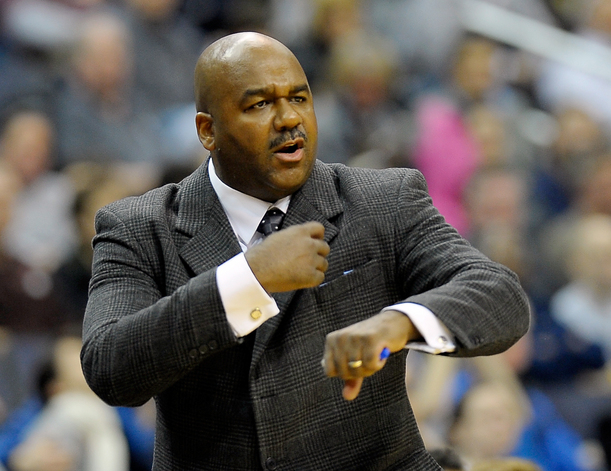Need.
The term is easily used in place of “want,” but even for people with various views on the matter, the word can apply to a range of situations.
We’re talking here about the college basketball programs which need to step up this season, or if not then, in the near future, a two- or three-year window.
In the case of Ryan Palencer, who joins me for this discussion, one of his two examples refers to a program which has done well, but faces the “need” to take one more step to relieve the fan base of a lot of agony. That’s “need” framed through the prism of “getting a monkey off one’s back.” An excellent program needs that one tangible reward for all the quality work it has done over the past few years.
Ryan’s other example — like each of mine below — refers to a program which needs to take the next step so that it can shed the label of an annual underachiever. This refers to November-through-February performance, not really March. One of the schools I refer to is actually a good March team (it made the Sweet 16 in the East Regional last season), but it needs to deliver the goods throughout a college basketball campaign.
Here are the programs which “need” to take the next step in college basketball.
*
RYAN PALENCER
Georgetown and Arizona.
Since making the Final Four in 2007, Georgetown has been eliminated in the first or second game of the NCAA Tournament six times and the NIT first or second round twice. This marks an eight-season span without a single Sweet 16. That’s a long time without a single appearance in the second weekend of the Big Dance.
Though the Hoyas lose Joshua Smith up front and Jabril Trawick in the backcourt, they also return their foremost leader, D’Vauntes Smith-Rivera. A lot of the cast will be youthful, but the talent will still be there.
Arizona is also a youthful squad under Sean Miller, but the Wildcats are on the opposite end of NCAA success in comparison to Georgetown. Miller is nearly 10 games over .500 in the NCAA Tournament, but has still yet to make a Final Four. This season, his young team will attempt to replace four of five starters. The last thing for Miller to do as a major-level coach is make a Final Four. Naturally, he must be identified as the coach of a program needing to take the next step.
MATT ZEMEK
In the case of California, it’s not as though the Golden Bears have been an annual threat, a team constantly knocking on the door of opportunity. The 2010 Cal team is memorable in that it gamed the RPI system to earn a higher seed in the first round (an 8 seed) despite zero achievements of note in a very weak Pac-10 (now Pac-12).
Over the larger run of history, Cal has made only two Sweet 16s (and no Elite Eights) since the great Pete Newell led the program to the national championship game in 1960. Cal WOULD be on this list if it had built more of a reputation over the past 30 years.
There’s no doubt Cal needs to step up this season with its heralded recruiting class. However, two schools face more urgent challenges, precisely because they have teased their fan bases for much longer periods of time.
LSU and North Carolina State are in so many ways the same program. They do well when they’re not expected to, and they fall short when expected to do more — at least, those are the twin identities the programs have carved out over the past third of a century.
N.C. State won it all as an underdog in 1983, but can’t get its more talented teams to produce high NCAA seeds. LSU did make the Final Four in 1981 as a high seed, but Dale Brown’s tenure developed as one which generated better results as an underdog seed (1986 and 1987) than as a top-five seed (1990) or anywhere close to that.
Last season, N.C. State and LSU met, appropriately enough, in the 8-9 game, a place unfit for teams with their levels of talent. LSU lost twice to Auburn last season, once at home and once on a neutral floor. North Carolina State lost at home to Clemson, and on the road to Wake Forest and Boston College.
This season, both teams are loaded — LSU due to the arrival of Ben Simmons and other elite recruits, N.C. State because its core is largely intact.
Can these teams get top-four NCAA seeds? It’s long past time.
